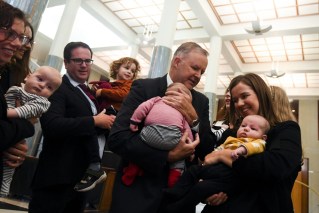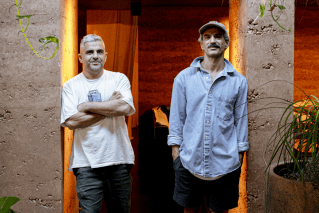Most Aussie women will soon be living into their 90s – so who’s going to care for them?
Australia’s population will age rapidly over the next four decades, with women expected to live to almost 90 years, and demand for aged care and social assistance workers to surge.

Stock image of an elderly couple in Brisbane, Wednesday, April 27, 2016. (AAP Image/Glenn Hunt) NO ARCHIVING
The Intergenerational Report, to be released by Treasurer Jim Chalmers on Thursday, will show Australians will live longer, healthier lives.
Life expectancy for men is forecast to rise to 87 years and for women to 89.5 years by 2062-63.
The number of people 65 and over is projected to more than double and those aged 85 and over to more than triple.
Australia’s population is projected to hit 40.5 million in the same period.
The report shows an ageing population will place pressure on taxpayers while increasing demand for care and support services.
The care economy could soar from about 8 per cent of GDP to about 15 per cent in 2062-63.
“Were employment to grow in line with the sector’s GDP share this would continue strong growth in care employment, with the number of care workers having more than doubled over the last 20 years and estimated to double again over the next 40 years,” an extract from the report reads.
The care sector will create new and meaningful jobs over the coming decades, with the major policy challenge to meet “increased demand while ensuring the sustainable delivery of quality care”.
“Funding and securing the necessary workforce will require a significant investment and productivity improvements will be critical,” the report reads.
Dr Chalmers described the growth in the care economy to be one of the “most prominent shifts in our society over the next 40 years”.
“The care sector is where the lion’s share of opportunities in our economy will be created and we want to make sure we grab this opportunity with both hands.”
Aged care minister Anika Wells said the report demonstrated the need for sustainable and equitable funding.
“The Albanese government has already formed an Aged Care Taskforce to address the sector’s financial sustainability and help older Australians have access to safe and dignified care now and into the future,” she said.
While net overseas migration is bouncing back following COVID-19 border closures, cumulative net overseas migration will not catch up to pre-pandemic levels until 2029-30, based on current forecasts.
“Population growth will continue to be supported by overseas migration and natural increase but both are expected to fall relative to the size of the population,” the report reads.
The level of net overseas migration is assumed to remain fixed at 235,000 persons over the long term.
The average annual population growth rate is projected to slow to 1.1 per cent over the next 40 years, compared to 1.4 per cent for the past 40.
The report also shows in the decade to 2020, the nation experienced the slowest productivity growth in 60 years.
The government has five key pillars to drive productivity: renewing economic institutions; investing in digital infrastructure; improving skills programs and access to higher education; a more sustainable care economy; and becoming a renewable energy superpower.
Dr Chalmers said the government has a “laser-like focus” on Australia’s productivity performance to ensure high standards of living.
Teal MP Allegra Spender said the report demonstrated a need for government to pursue wholesale tax reform in ordert to lessen the nation’s reliance on GST revenue and a shrinking workforce.
“The big question is how do make sure our economy is productive and actually able to afford this because we want to support … ageing Australians to have a great quality of life,” she told ABC radio.
“But unless we actually get the productivity right this will be harder and harder for future generations to afford.”












